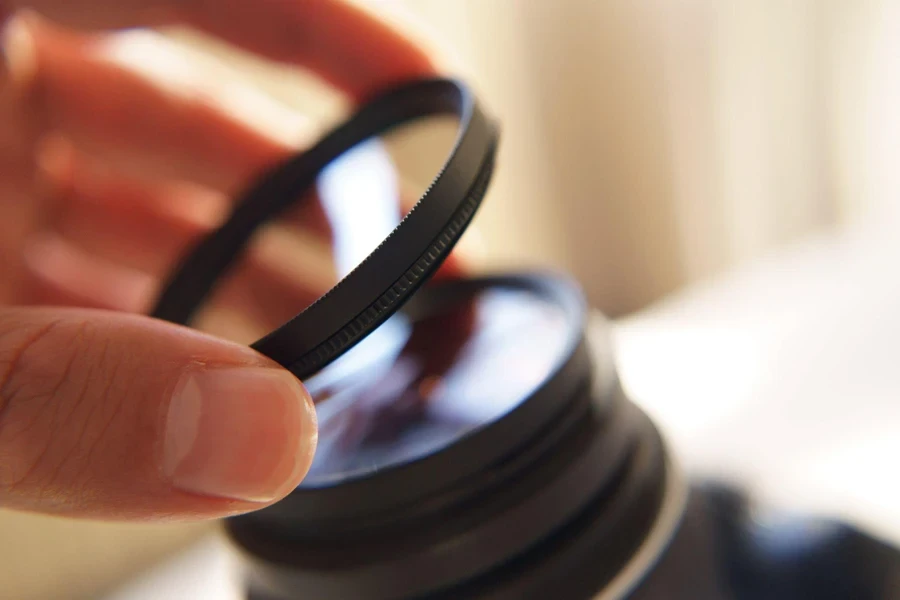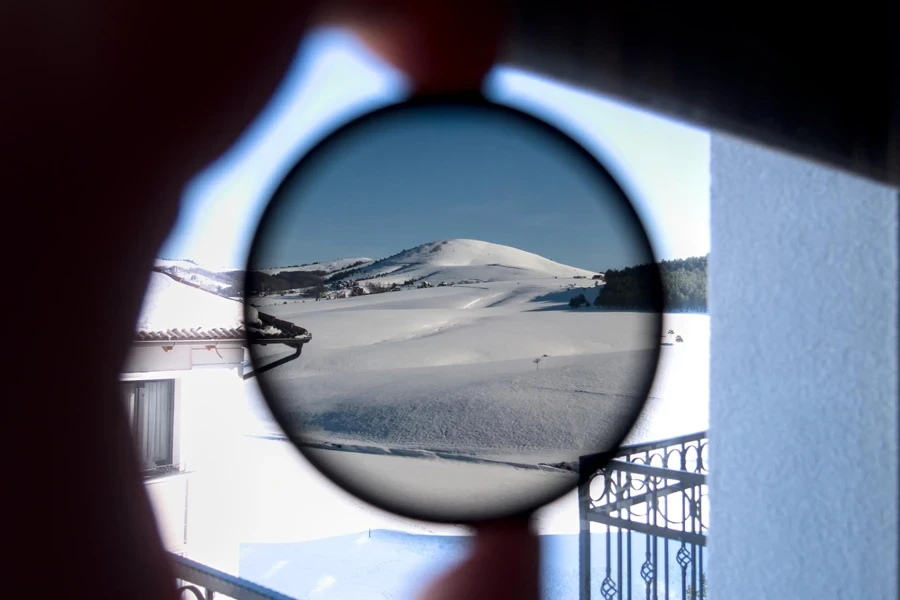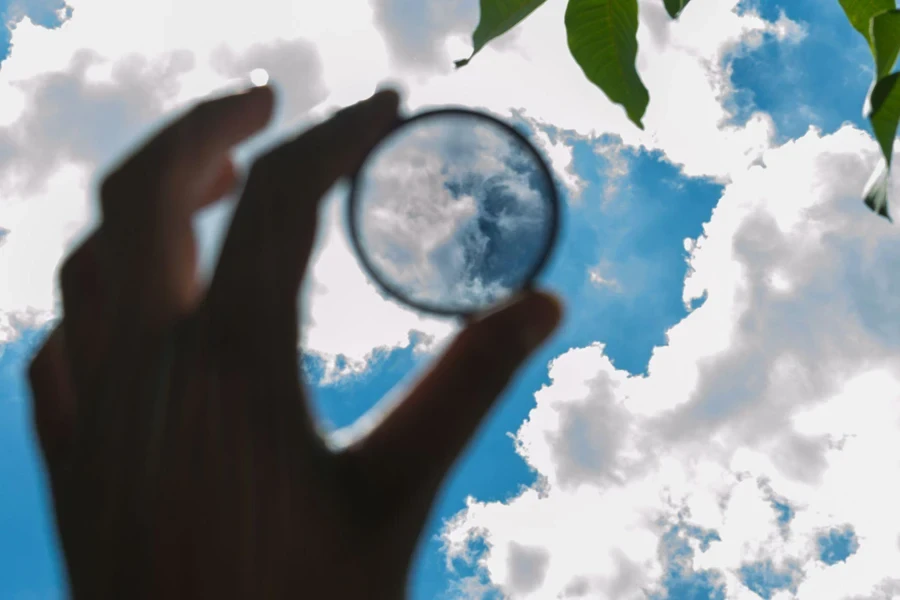Camera filters are essential tools that significantly enhance photography by manipulating light and improving image quality. These versatile accessories can reduce glare, deepen color saturation, balance exposure in high-contrast scenes, and even capture unseen details in the infrared spectrum. Whether it’s for outdoor landscapes, long-exposure shots, or creative effects, the right camera filter can transform ordinary images into stunning works of art. Investing in high-quality filters not only protects valuable lenses but also provides photographers with greater control over their craft, allowing for a wide range of photographic possibilities and artistic expression.
Table of Contents
1. Understanding camera filter types and their uses
2. Market overview of camera filters in 2024
3. Key considerations for selecting camera filters
4. Leading camera filters and their features
5. Conclusion
Understanding camera filter types and their uses

Camera filters are indispensable tools for photographers aiming to enhance image quality and creativity. Each type of filter serves a specific purpose, allowing photographers to manipulate light and achieve desired effects directly in-camera. This section delves into the various types of camera filters and their distinct uses.
Polarizing filters
Polarizing filters are essential for outdoor photography, effectively reducing glare and reflections from surfaces like water and glass. By blocking polarized light, these filters enhance color saturation and contrast, resulting in more vibrant and detailed images. Polarizing filters are particularly beneficial for landscape photographers, as they deepen the blue of the sky and reduce the haze often seen in distant subjects.
Neutral density (ND) filters
Neutral density (ND) filters are crucial for managing light exposure in bright conditions. These filters reduce the amount of light entering the lens without affecting the color balance. ND filters enable photographers to use slower shutter speeds or wider apertures, creating effects such as motion blur in waterfalls or achieving a shallow depth of field in bright sunlight. Variable ND filters offer adjustable light reduction, providing flexibility for different shooting scenarios.
Graduated ND filters
Graduated ND filters are designed to balance light in high-contrast scenes, such as landscapes with bright skies and darker foregrounds. These filters have a gradual transition from dark to clear, allowing photographers to control the exposure of specific parts of the image. There are three main types of graduated ND filters: hard-edge, soft-edge, and reverse. Hard-edge filters have a sharp transition, ideal for flat horizons, while soft-edge filters have a smoother gradient, perfect for uneven landscapes. Reverse graduated ND filters are used for sunrises and sunsets, where the light is more intense near the horizon.
Infrared filters
Infrared filters open up a world of unseen details by capturing light in the infrared spectrum. These filters block visible light, allowing only infrared light to reach the camera sensor. The resulting images have a surreal, dream-like quality with unique color renditions. Infrared photography is popular for creating ethereal landscapes and artistic effects that are impossible to achieve with standard filters.
Diffusion filters
Diffusion filters soften the light entering the lens, creating a gentle, dreamy effect that is perfect for portraits and product photography. These filters reduce contrast and highlight sharpness, giving the images a more ethereal and cinematic quality. Diffusion filters are often used by videographers and photographers who aim to create a specific mood or soften harsh lighting conditions.
Light pollution filters
Light pollution filters are essential for night sky photography, particularly in urban areas with significant artificial lighting. These filters selectively block wavelengths associated with streetlights and other artificial light sources, enhancing the clarity and detail of stars and celestial objects. By reducing the orange or yellow glow from light pollution, these filters allow for more accurate and detailed astrophotography.
UV protection filters
UV protection filters safeguard camera lenses from harmful ultraviolet rays and physical damage. While modern digital sensors are less sensitive to UV light, these filters still play a vital role in protecting the lens from scratches, dust, and moisture. High-quality UV filters do not affect image quality, making them a valuable addition to any photographer’s gear for lens protection.
Each type of camera filter offers unique benefits, allowing photographers to enhance their images in ways that post-processing software cannot replicate. From reducing glare and controlling light exposure to creating artistic effects, understanding the different types of filters and their uses is crucial for achieving the best photographic results.
Market overview of camera filters in 2024

Current market trends
The demand for high-quality camera filters continues to rise among professional photographers. This growth is driven by an increasing recognition of the unique effects and enhancements that filters can provide, which are difficult to replicate with software. Photographers value filters for their ability to manage light, reduce glare, enhance colors, and protect expensive lenses. The market is also seeing a shift towards more specialized filters, such as those for astrophotography and infrared photography, reflecting broader trends in photographic interests and techniques.
Market data and statistics
The camera filter market is experiencing steady growth, with significant contributions from leading manufacturers like Tiffen, Hoya, and Lee Filters. The global digital camera market, which is closely linked to the filter market, is projected to reach substantial figures in the coming years. For instance, the digital camera market was valued at approximately USD 10.5 billion in 2020 and is expected to grow at a compound annual growth rate (CAGR) of around 3.8% from 2021 to 2028. This growth is indicative of the expanding demand for camera accessories, including filters. Popular filter types such as polarizers, ND filters, and UV filters remain in high demand, with innovations in materials and coatings enhancing their appeal.
Experts currently value the camera filter market at approximately US$ 928 million, and they expect it to reach US$ 1.34 billion by 2028. They estimate this boost will happen at a 6.1% compound annual growth rate (CAGR) from 2023 to 2028.
Emerging technologies
Innovations in filter materials and coatings are at the forefront of market developments. Advanced coatings now offer superior durability, scratch resistance, and hydrophobic properties, which protect the filter surface from water and oil. These coatings also enhance optical performance by reducing reflections and increasing light transmission. Additionally, new materials are being used to create lighter and stronger filters that do not compromise on quality. For example, Gorilla Glass and other advanced polymers are being incorporated into filter designs to provide better protection and longevity.
The integration of magnetic systems for quick and easy filter attachment and removal is another emerging trend. These systems allow photographers to switch filters rapidly without the need for threading, thus saving time and reducing the risk of cross-threading. This technology is becoming increasingly popular, particularly among landscape photographers who need to adapt quickly to changing light conditions.
The camera filter market in 2024 is characterized by continuous innovation and an increasing emphasis on high-quality, specialized products. As photographers seek to push the boundaries of their creativity and technical skills, the demand for advanced filters that enhance image quality and provide unique effects is set to grow. This trend highlights the importance of staying informed about the latest developments and choosing products that offer the best combination of performance, durability, and ease of use.
Key considerations for selecting camera filters

Optical quality
Optical quality is crucial when selecting camera filters, as it directly impacts image clarity and overall performance. High-quality filters typically use superior glass, such as Schott or Gorilla Glass, known for their optical purity and durability. These filters often feature multi-layer coatings that reduce reflections, prevent ghosting, and enhance color fidelity. For instance, a high-end polarizing filter with anti-reflective coatings can increase light transmission to over 98%, ensuring minimal loss of light and sharper images. Brass frames are preferred over aluminum for their durability and resistance to jamming, providing a more secure fit and longevity.
Filter size and compatibility
Choosing the correct filter size is essential to avoid vignetting and ensure a perfect fit. Filters come in various diameters, usually marked on the lens barrel or cap, ranging from 37mm to 82mm for standard lenses. For instance, a Canon EF 24-70mm lens requires an 82mm filter. Using step-up or step-down rings allows for the adaptation of one filter to different lens sizes, offering flexibility and cost savings. Compatibility with filter systems like Cokin or Lee enables photographers to use square or rectangular filters with various lenses, enhancing versatility and reducing the need for multiple filters.
Specific use cases
Selecting filters based on the type of photography is vital for achieving the desired effects. Polarizing filters are indispensable for outdoor photography, reducing glare from water and glass surfaces while enhancing color saturation and contrast. Neutral density (ND) filters, such as the K&F Concept ND1000, are perfect for long-exposure photography, allowing for slower shutter speeds even in bright conditions. Graduated ND filters are essential for balancing light in high-contrast scenes, making them a staple for landscape photographers. Infrared filters, like the Hoya R72, enable creative effects by capturing light in the infrared spectrum, producing surreal and unique images.
Brand reputation and reviews
Evaluating trusted brands and customer feedback is crucial for selecting reliable and high-performing camera filters. Brands like Tiffen, Hoya, and Lee Filters are renowned for their consistent quality and innovative products. Customer reviews on platforms like B&H and Amazon provide insights into real-world performance and durability. For example, the Tiffen 77mm UV Protection Filter has over 2,000 positive reviews, highlighting its effectiveness in protecting lenses and maintaining image quality. Professional endorsements and reviews from photography websites and magazines also offer valuable recommendations based on extensive testing and usage.
Budget and value
Balancing cost with quality and functionality is essential for making informed purchasing decisions. While premium filters offer superior optical quality and durability, they come at a higher price. For instance, a high-quality polarizing filter from Lee Filters can cost around $150, but it ensures top-notch performance and longevity. On the other hand, budget-friendly options like Amazon Basics filters provide decent performance at a lower cost, making them suitable for beginners or casual photographers. Evaluating the specific needs and frequency of use can help determine whether investing in premium filters or opting for more affordable alternatives is the best approach.
Leading camera filters and their features

Tiffen 77CP Circular Polarizer
The Tiffen 77CP Circular Polarizer is renowned for its ability to reduce reflections and glare from non-metallic surfaces such as water and glass, while simultaneously enhancing the colors and contrast in the image. This filter is particularly effective for landscape photography, as it deepens the blue of the sky and makes clouds stand out more vividly. The Tiffen 77CP blocks approximately 1.5 stops of light, which can be advantageous for controlling exposure in bright conditions. Its robust construction, using high-quality optical glass and durable aluminum frames, ensures longevity and reliability. The filter’s multi-coating significantly reduces lens flare and ghosting, which enhances image clarity.
K&F Concept ND1000 Neutral Density Filter
The K&F Concept ND1000 Neutral Density Filter is essential for photographers looking to achieve long-exposure effects in bright environments. With a 10-stop light reduction, this filter allows for extended shutter speeds, creating smooth, silky water effects and dramatic motion blur in clouds. It features high-quality Japanese AGC optical glass with 28 multi-layer coatings, ensuring minimal color cast and excellent image sharpness. The ND1000’s water and oil repellent surface protects against smudges and makes cleaning easy. Its ultra-slim aluminum alloy frame minimizes vignetting on wide-angle lenses, making it a versatile choice for various types of photography.
LEE Filters Elements Little Stopper
The LEE Filters Elements Little Stopper provides a six-stop reduction in light, making it ideal for long-exposure photography during the day. This filter is constructed from high-quality optical glass, which ensures clarity and color accuracy. The Little Stopper is particularly useful for capturing motion in water or creating a sense of movement in clouds. It features a scratch-resistant coating, enhancing its durability and longevity. The filter is designed to fit the LEE Filters system, allowing easy integration with other LEE products, making it a valuable addition to any professional photographer’s toolkit.
Hoya Fusion CIR-PL Polarizing Filter
The Hoya Fusion CIR-PL Polarizing Filter is designed for photographers who require superior performance in outdoor settings. This filter reduces reflections and glare from surfaces like water and glass, while enhancing color saturation and contrast. The Hoya Fusion CIR-PL is made with high-transparency polarizing film and multi-coating technology that minimizes flare and ghosting. Its water and stain-resistant coating ensures easy maintenance, and its ultra-thin frame prevents vignetting on wide-angle lenses. The filter is available in various sizes, catering to different lens diameters, and is praised for its durability and reliability.
Cokin Z-Pro Expert Kit
The Cokin Z-Pro Expert Kit is a comprehensive solution for photographers seeking versatility and control in their filter use. This kit includes a range of graduated ND filters, a polarizing filter, and several adapter rings to fit different lens sizes. The graduated ND filters are perfect for balancing exposure in high-contrast scenes, while the polarizing filter enhances color saturation and reduces reflections. The filters are made from high-quality optical resin, which is lightweight and durable. The Z-Pro system is compatible with the Cokin filter holder, allowing for easy attachment and adjustment, making it a favorite among landscape photographers.
Kase Wolverine Neutral Night Filter
The Kase Wolverine Neutral Night Filter is specifically designed for night photography, particularly in urban environments where light pollution is prevalent. This filter effectively reduces the yellow and orange glow from streetlights, resulting in clearer, more detailed images of the night sky. The Wolverine filter is made from toughened optical glass, making it resistant to scratches and impacts. Its multi-coating technology minimizes flare and ghosting, ensuring high-quality images. The filter’s water and oil repellent surface makes it easy to clean, maintaining its performance over time.
Hoya R72 Infrared Filter
The Hoya R72 Infrared Filter opens up new creative possibilities by allowing photographers to capture images in the infrared spectrum. This filter blocks visible light up to 720nm, letting only infrared light pass through. The resulting images have a unique, surreal quality with distinct color renditions that are not possible with standard filters. The Hoya R72 is made from high-quality optical glass, ensuring sharpness and clarity. Its durable construction and precise manufacturing make it a reliable choice for photographers exploring infrared photography. The filter is available in various sizes, fitting a wide range of lenses, and is praised for its consistent performance and ease of use.
Conclusion
Choosing the right camera filters is crucial for enhancing the quality and creativity of photography. Filters like the Tiffen 77CP Circular Polarizer and K&F Concept ND1000 provide specialized solutions for different shooting conditions, from reducing glare to enabling long exposures. High-quality filters, such as those from LEE and Hoya, ensure durability and superior optical performance. By considering factors like optical quality, filter size, specific use cases, and brand reputation, photographers can make informed decisions that significantly impact their work. Investing in the best filters equips photographers with tools to achieve exceptional results in their creative endeavors.



